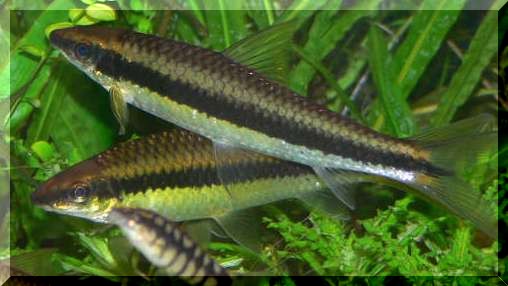Cookie Policy
We use cookies to help improve the experience you have on this site. You can find out more here.
We use cookies to help improve the experience you have on this site. You can find out more here.


In all of the established literature, there is a fish consistently praised for it's effective ability to control many types of algae commonly found in the home aquarium - the Siamese Flying Fox (Crossocheilus siamensis). In more recent times this planted aquarium 'must have' has been confused with similar fishes and has itself been seen under a variety of different names, including 'Siamese algae-eater' and the abbreviated 'S.A.E.' As with many common names, overlap between similar fishes can be problematic. Older literature refers to the Siamese Flying Fox as Epalzeorynchus siamensis.
The original Flying Fox (Epalzeorhynchus kallopterus) first introduced to aquarists is a species that now finds itself in the same genus as the popular but troublesome Redtailed Black Shark (E. bicolor) and shares with it a modest appetite for algae and a territorial nature. This handsome fish is a good tankmate for barbs in a robust community tank but is too aggressive for the average peaceful plant aquarium. 
The fish most frequently mistaken for our subject is, rather ironically, related to some very effective and desirable algae eaters currently becoming rather fashionable thanks to a surge of interest in Asian Cyprinids. This aside, the frequency of this error has earned Garra taeniata the common name False Siamese Flying Fox. As might be expected from a family commonly known as the Stonelappers, this fish will eat some algae but exhibits a level of territorial aggression high enough to prove a nuisance in many aquaria. Unfortunately, many exporters supply this fish under the wrong name and perpetuate the error. This may be linked to an incorrect photograph used in the otherwise excellent Baensch Aquarium Atlas series (Mergus) where both volume 1 and the photo index 1-5 depict a juvenile Garra. The numerous cases of mistaken identity have literally given this fish a bad name and a more enlightened approach reveals this fish and it's close relatives to be worthwhile algae eaters suited to active community aquaria that benefit from the strong water movement that they prefer.
For delivery before Christmas, orders must be placed on or before 3pm on Wednesday 20th December. We cannot guarantee delivery of these orders pre-Christmas as we are reliant on our couriers, but will use our best endeavours to get orders placed on this date out to you before Christmas. For full details of our festive delivery and opening times click here
Please note: online orders placed after 3pm on Friday 22nd December will not be dispatched until the New Year. For full details of our festive delivery and opening times click here